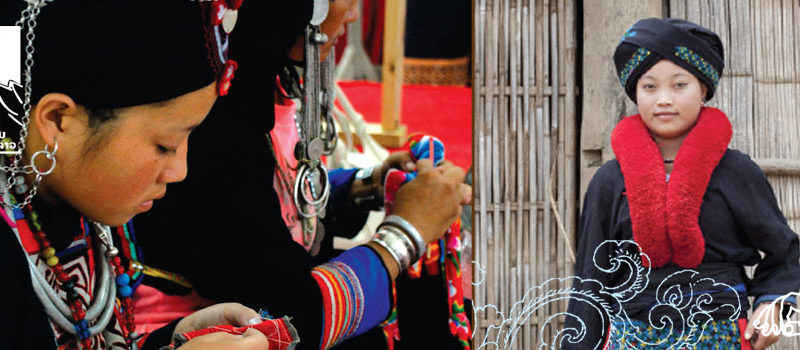Handicraft Designers Pledge To Protect Traditional Designs
Source: Vientiane Times
It is important that everyone understands the definition of legal terms with regard to traditional designs, in order to protect cultural and intellectual property rights.
This was the topic of a meeting attended by the President of the Lao Handicrafts Association, Ms Souvitta Phaseuth, along with senior ministry officials and invited guests.
The meeting was addressed by a senior official from the Department of Intellectual Property under the Ministry of Industry and Commerce, Mr Saybandith Sayavongkhamdy. He said the issue of copyright was important after the Oma ethnic group in Phongsaly province had clothing designs plagiarised by an Italian fashion brand.
The meeting was organised by the Traditional Arts and Ethnology Centre and the Lao Handicrafts Association, with support from VOICE.
There have been many violations of copyright as evidenced by the sale of certain goods in markets, other places in Laos, and in other countries.
Better knowledge of copyright and trademarks has become necessary in the traditional handicraft industry after it has been found that many traditional designs have been copied and sold because they were not registered.
Mr Saybandith explained why tools like copyright and trademarks have limited use for traditional handicrafts.
Also speaking at the meeting, Co-Director of the Traditional Arts and Ethnology Centre, Ms Thongkhoun Soutthivilay, explained how the centre had been working with the Oma ethnic group and had documented their traditional designs in a database.
The database will be copyrighted by the Department of Intellectual Property.
“We should replicate this model for all artisan communities in Laos, to ensure their work is not plagiarised like that of the Oma,” Ms Thongkhoun said. The panel discussion that followed fielded questions such as how small businesses who work with artisans can protect their own designs, as well as support artisans.
Representatives of the Lao government, Lao Handicrafts Association, and cultural heritage stakeholders agreed that protecting the traditional designs of Laos’ ethnic groups is an urgent priority and discussed models for legal action.
The event drew panel lists and participants from the Ministry of Industry and Commerce, Ministry of Information, Culture and Tourism, and others, as well as handicraft businesses, young designers, village artisans, embassies, and non governmental organisations.
The meeting kicked off with a video about the importance of traditional cultural knowledge, particularly for rural crafts producers and the tourism sector.
It also showed how the fashion company Max Mara copied designs from the Oma ethnic group.
They pledged to work together to protect the cultural intellectual property of Laos’ ethnic groups, due to its importance to the country’s heritage, rural livelihoods, and identity.




